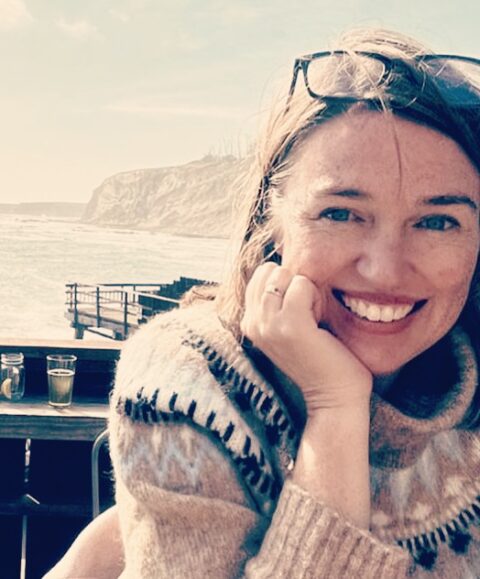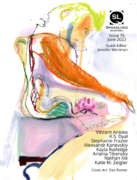“Paradise Cut” is one of those narratives that gives anew when read a second time. The reader can’t be certain what has happened until the line, “My mother and I didn’t find him,” and during a second read, everything before this line carries much more weight. How much of this was intentional vs. unintentional? It also demonstrates a distance the speaker is trying to have from the topic, no?
I definitely want the reader to be able to step into this world and look around a bit before the true concepts of the piece are revealed. The setting, the irony of its name, the effect it continues to have on me, felt like such a powerful way to enter into this piece and did give me a bit of necessary distance. I think whenever we are writing about trauma, or past despair, it can be so healing to find the accessories of that experience and examine them for truth.
There is so much not said in this short piece that I’m sure could be mentioned. How did you decide what worked for the narrative?
This piece has gone through many iterations over the years, beginning as a significantly longer essay, then evolving into a dark take on “Three Billy Goats Gruff,” until this version. I spent many years thinking that in order to write about my experience with my father authentically and truthfully, I needed to write a long, multi-section piece, delving into all the details as a means of healing. But during a craft nonfiction class with Chris Arnold in my MFA program, we were studying flash nonfiction. I’ve written flash fiction before, but had never allowed it to be used as a lens for nonfiction. Giving myself permission to tell this story in an extremely distilled fashion created something new and quite visceral; the parameters didn’t box me in, rather they allowed me to just tell the truth in a way that felt so expansive, despite the brevity.
I recently had a discussion with a fellow writer about choosing genre and mode for storytelling. How does one decide if a story should be presented as fiction or nonfiction, and does it matter?
That’s such an interesting discussion and one I have quite often with my writer friends. At times, when writing fiction, I’ve been emboldened by the veil it offers, the distance that fiction allows me to create between myself and the narrative I’m building. There is still vulnerability in that writing, but what I’ve found is that I can tap into my own experiences and share them across my characters, offering up details and dimensions to them that are incredibly personal to me, but not centered on one character. In my nonfiction, that veil is lifted and I have the tendency to feel quite exposed at the get-go. But it’s that initial discomfort that I find strangely motivating. In fiction, I have to be true to my characters, and honor the world I’m building for them. In nonfiction, I have to be true to myself and the world I’ve come from.
We’ve all experienced unexpected change in the last few years. What has it taught you about writing or how has it changed your work?
I’d decided to go back to school (after many years …) to get my MFA in creative writing and, just a month or two after being accepted, the world shut down due to the pandemic. My cohort was lucky enough to be able to embark on our graduate program, but it was entirely online: Zoom lectures, Zoom readings, Zoom everything. And, initially, I mourned the loss of that camaraderie, that community I thought could only be built in person, in concert with one another. But Zoom is a strange animal and somehow, it managed to bring us together in a new way; our walls went down as writers and as people, and we forged connections quite quickly with one another. This was completely transformational for me as a writer. It had been many years since I’d had a sense of literary community and, despite being home, teaching college classes on Zoom and watching as my two sons navigated high school via Zoom, the words kept coming and I discovered new writing habits, spent hours diligently creating playlists for my writing time, drank seven thousand cups of coffee a day and, in the process, found a new and exciting voice within myself.
Tell us about your book, COVIDinners: Adventures in Quarantine Dining.
When the shelter-in-place order was announced, I found myself desperate for something to keep my family’s spirits buoyed. So, I started drawing little cartoons on our kitchen whiteboard every night, announcing what we were eating that evening. What began as literal representations of spaghetti and chicken pot pie, quickly turned into a way for me to express my frustration with the situation, the political atmosphere, our isolation. At my family’s insistence, I began posting pictures of the daily whiteboards on Instagram, and they just took off. People started sending me requests, sharing my whiteboards with others, and the thought of turning it into a book started to take shape. So, I self-published it, thinking I’d give them as gifts to friends and family, but people began ordering copies and it just evolved from there. It is a ridiculous little book, with everything from “Fauci Fajitas” to “Silence of the Clams,” but it brought my family joy and allowed me to put my creativity to use.



 The core workshop of SmokeLong Fitness is all in writing, so you can take part from anywhere at anytime. We are excited about creating a supportive, consistent and structured environment for flash writers to work on their craft in a community. We are thrilled and proud to say that our workshop participants have won, placed, or been listed in every major flash competition. Community works.
The core workshop of SmokeLong Fitness is all in writing, so you can take part from anywhere at anytime. We are excited about creating a supportive, consistent and structured environment for flash writers to work on their craft in a community. We are thrilled and proud to say that our workshop participants have won, placed, or been listed in every major flash competition. Community works.